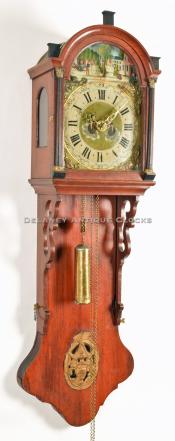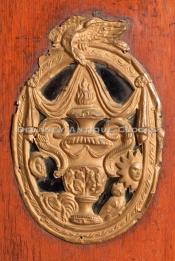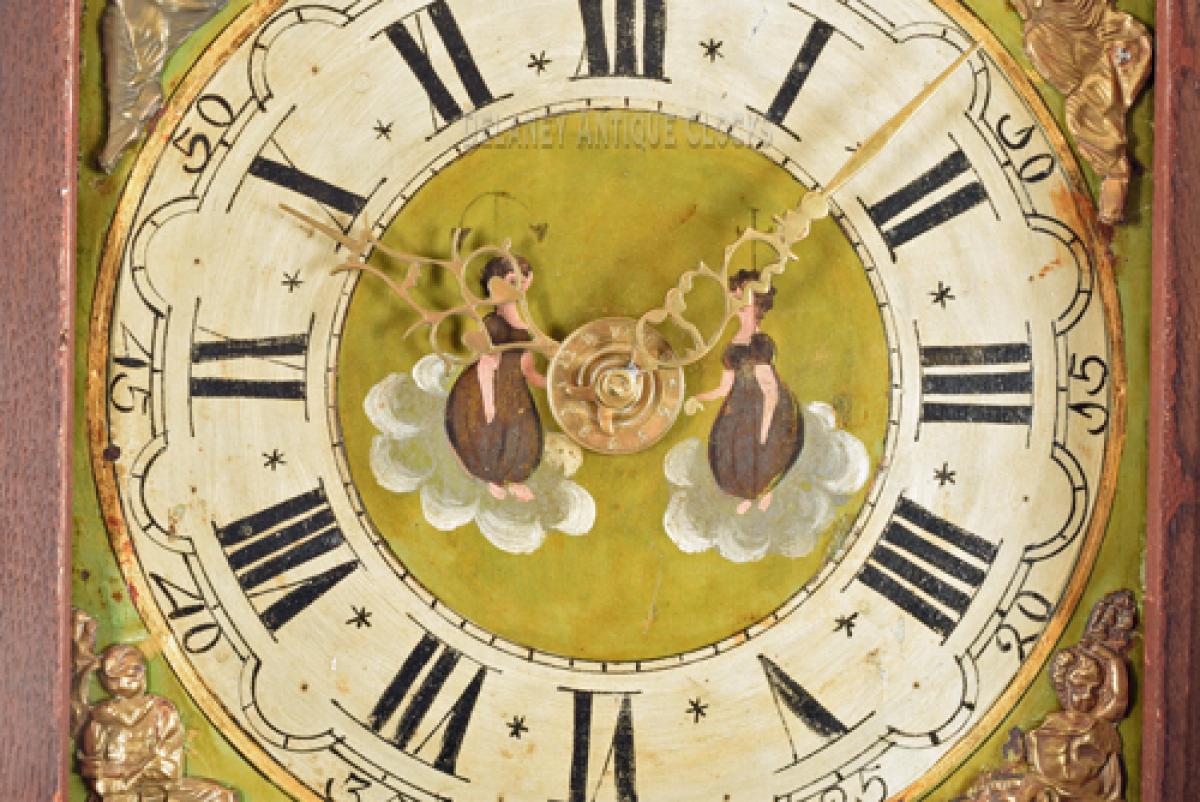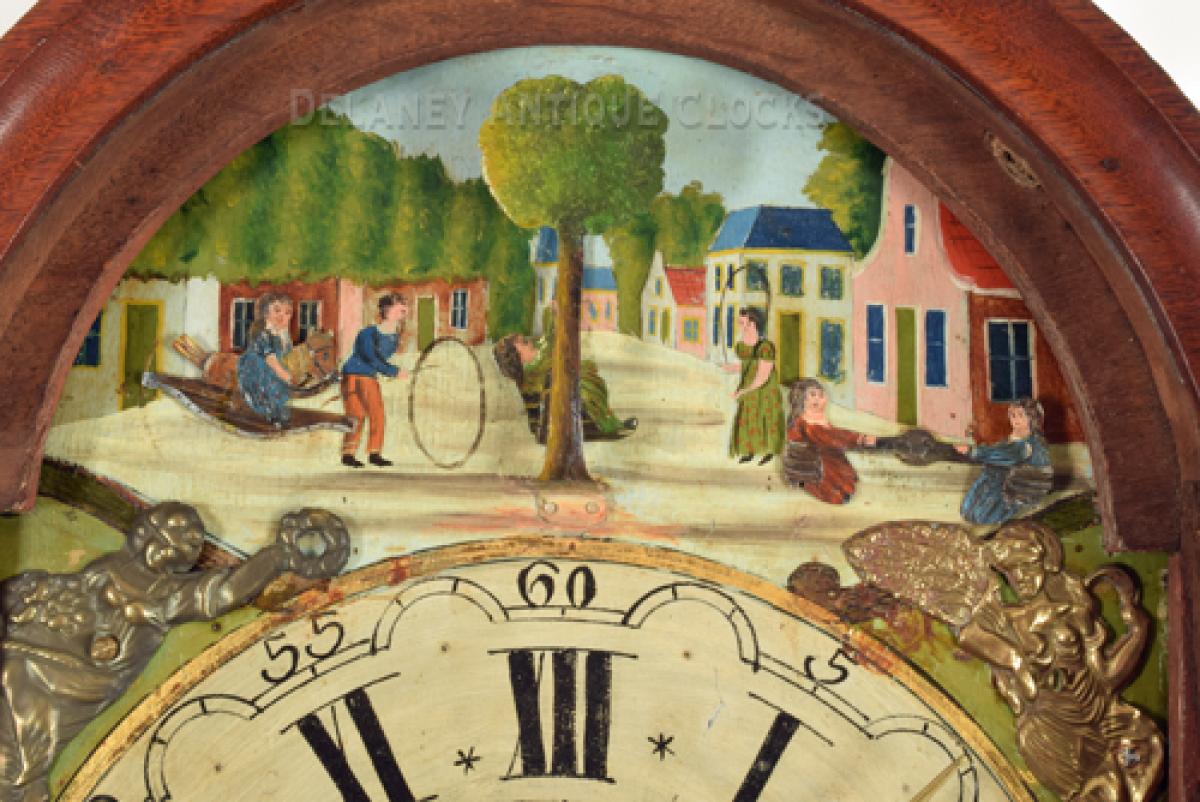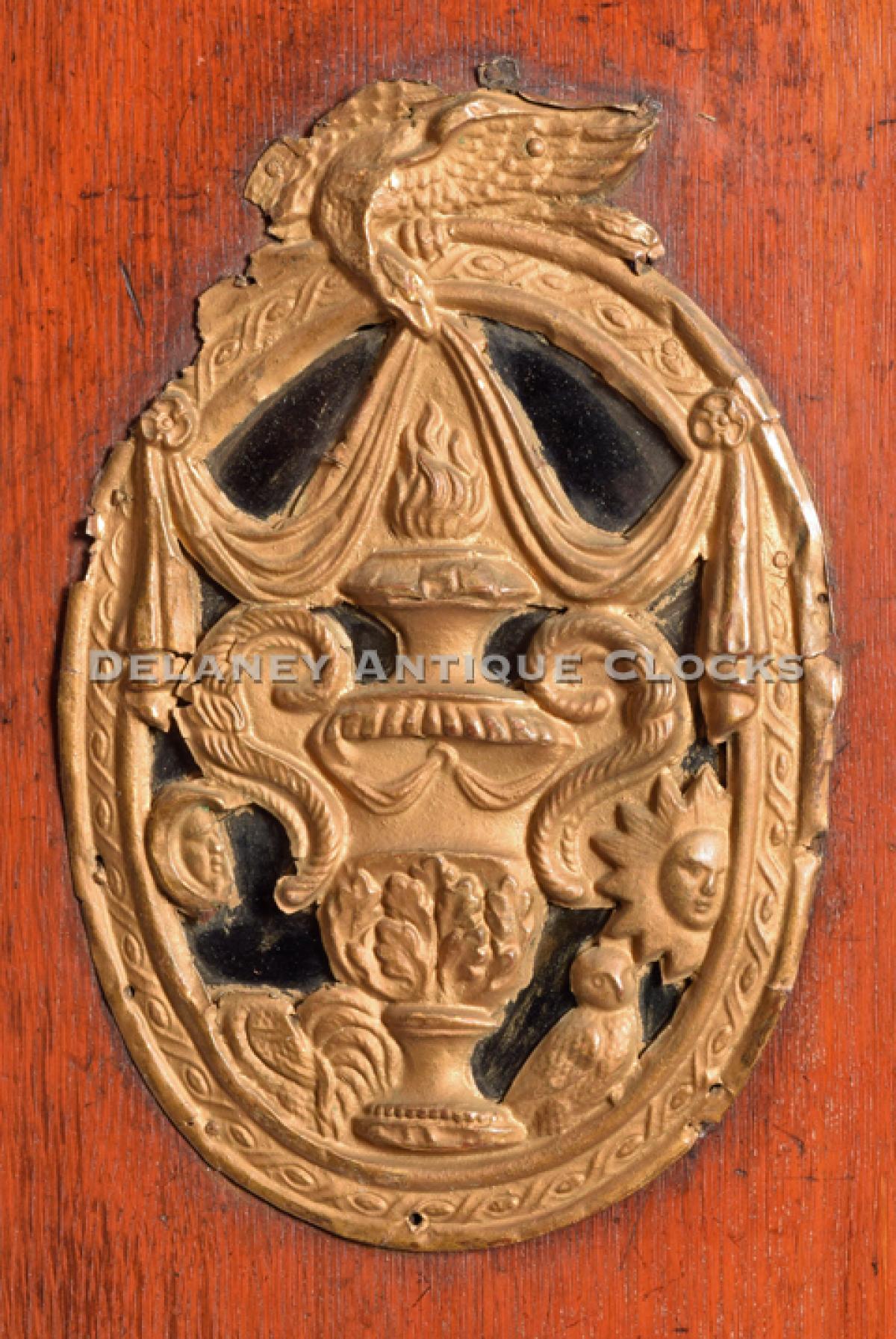A Friesland wall clock with automata in the arch.
This very good example was made in the Netherlands sometime around 1850. Later features that help date this form are the position of the painted scene in the arch and the automata that is displayed above the time ring.
This case is constructed in mahogany and retains an older finish that has slightly darkened with age. The color of the wood is pleasing. The hood is designed like the hood of a tall case clock. Flanking the sides are engaged columns which are capped with Corinthian capitals. The opening is fitted with glass in order to protect the dial.
The colorfully painted iron features Roman hour numerals, Arabic five minute markers and pierced brass hands of a traditional design. The four spandrel area are fitted with applied brass spandrels. Each of these represents one of the four seasons. Winter is depicted in the lower left corner. The arch of this dial is decorated with an iconic Dutch village scene that features automation. This village is set along the a street where a number of children are playing. One the right, two children on playing on a teeter-totter. This moves in the appropriate fashion with the motion of the pendulum. The pendulum motion also drives the small lad swinging on a rope tied to a tree in the center of the dial and child on the left riding a wooden horse. Several buildings are depicted in the scene. They are a traditional form and are colorfully depicted.
The movement is constructed in brass. It is designed to run thirty-hours on a wind. It is weight driven and is wound by raising the brass capped weight by pulling on the chain to its right. The movement is a posted frame design and features typically shaped Freisland style pillars and an anchor escapement. The pendulum swings inside the lower section of the case. This case is designed to protect it. The brass faced bod can be viewed through the opening, The pendulum aperture is ornately cast and is nicely themed.
This case measures approximately 51 inches in length, 9 inches deep and 14.25 inches wide. This fine example was made circa 1850. It is inventory number VV-117.

